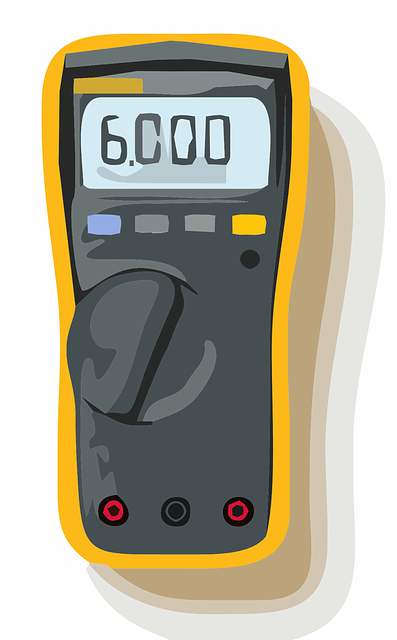Hi steemians, I have decided to share some of my physics notes in the hopes that it will help some of you!
Systematic Uncertainties:
This occurs when all the measurements are affected in the same way due to equipment and or method.
Example:
Metre / Meter stick may have shrunk may cause all the measurements to be too small.
Measuring:
As this affects all measurements, it is not usually calculated.
Scale Reading Uncertainty
On an analogue scale like so:

the uncertainty is measured as +- half of the smallest division.
Example:
If a voltmeter has 10 divisions between each 1volt difference the uncertainty would be 0.05 (half of 1/10) expressed as:
1.65 +- 0.05 Volts
On a digital scale:

We take the uncertainty as +- the last digit on the screen.
Example:
Reading 12.88 Volts
Uncertainty is 0.01 Volts
So 12.88 +- 0.01 Volts
Random Uncertainty:
Random fluctuations can affect measurements from reading to reading, for example, some are too big and some are too small.
E.g Timing with a stopwatch as sometimes it starts early and sometimes it starts late.
To work out the random uncertainty you have to repeat the experiment a few times.
Random Uncertainty = (Max Reading - Min Reading) / Number of readings
Example:
Times for a ball to run down a slope:
Times: 1.5, 1.1, 1.6, 1.4 Seconds
Random Uncertainty = (1.6 - 1.1)/ 4
= 0.5/4
= 0.125
= 0.1 to 1dp as original figures are only 1 dp.
Answer = (1.5 + 1.1 + 1.6 + 1.4) / 4 (MEAN AVERAGE)
= 1.4 Seconds
Final Answer: 1.4 +- 0.1 Seconds
Comparison of Uncertainties:
When you have multiple uncertainties you must convert them to percentages by using the formula:
Percent Uncertainty = Uncertainty / Value * 100
and then you take the highest percentage uncertainty as the uncertainty and convert it back to a number.
So say we have:
Distance = 1.5 +- 0.1 Metres (1 Metre = ~3 1/3 Feet)
Time = 1.2 +- 0.1 Seconds
Calculate Speed With Uncertainties:
Distance Uncertainty = 0.1/1.5 = 6.67% (2 Decimal Places)
Time Uncertainty = 0.1 / 1.2 = 8.33% (2Dp)
So Final Uncertainty = 8.33%
v = d/t or s = d/t
v = 1.5/1.2
v = 1.25 Ms^-1 or 1.25 M/s (Metres Per Second)
v = 1.25 +- 8.33% M/s
Uncertainty = 1.25 * 8.33%
Uncertainty = 0.104125
Uncertainty = 0.10 to 2dp
v = 1.25 +- 0.10 M/s
How do we apply this in the real world or real life or I guess on real science? I could see it could be applied on probability theory?
Downvoting a post can decrease pending rewards and make it less visible. Common reasons:
Submit
Mainly, it is used in scientific experiments as when you write them up you have to evaluate your experiment, so uncertainties can be used to tell how well the experiment represents what it should, and can be used to decide whether the experiment needs to be changed / factors need to be eliminated and if a repeat needs to be done, maybe with more readings and exclusion of the end (extreme) values.
Hope this answers your question, and if not, just reply and I will try and help!
Downvoting a post can decrease pending rewards and make it less visible. Common reasons:
Submit
Yeah for scientific experiments, I never thought that. I'm satisfied with your answer.
Downvoting a post can decrease pending rewards and make it less visible. Common reasons:
Submit
Thanks for your interest! Nice to see active members of the community!
Downvoting a post can decrease pending rewards and make it less visible. Common reasons:
Submit
Thank you and you're welcome!
Downvoting a post can decrease pending rewards and make it less visible. Common reasons:
Submit
@originalworks @originalworks2
Downvoting a post can decrease pending rewards and make it less visible. Common reasons:
Submit